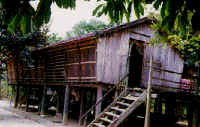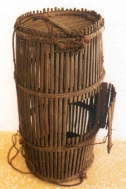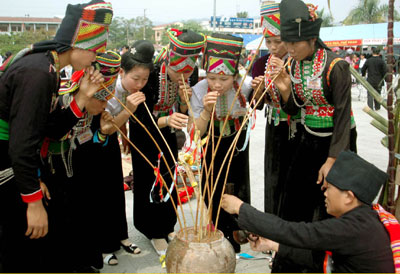In the past, the Cho ro mainly practiced slash-and-burn cultivation. They lived a poor and unstable life. Later, they turned burnt-over land into stable cultivable land and in some certain places, rice cultivation in submerged fields is developed. Thanks to this, the life of the Cho ro has been improved. Animal husbandry, hunting, gathering and fishing play important role in Cho ro daily life. Basketry and wood article-making are their main sideline occupations.
Cho ro women used to wear jupes, men loincloths and a shirt pulled over their heads. In winter they covered with a blanket. Of late they have adopted the Kinh style of dress. They are easily recognized however because of the baskets they retain to carry on their backs and the production of ornaments worn by the women - necklaces and bracelets made from copper, silver or beads.
The Cho ro used to live in houses on stilts and access to the floor by a ladder placed at one of the ends of the house. Some recent decades, they are familiar with the life in houses built on the ground. The interior is simple with some gongs and jars which are considered a value. In recent years, many families could buy their bikes.
Both matrilineal and matriarchal customs are significant in Cho ro family life. In marriage, though the family of the man proposes marriage, the wedding ceremony is always organized at the bride's house. The man has to come to live in his wife's house for several years, then they will live in their separate house.
The Cho ro bury the dead in Cho ro traditional customs. The coffin is a hollowed-out tree trunk. The grave is topped by a semicircular tumulus. Three days after the burial, the ceremony of opening the grave takes place.
The Cho ro believe that all things have their souls and the spirits are an invisible control of man which forces man involved in worship and put them under taboos. Most important is the rituals worshipping the souls of the forest and the rice. Cho ro folklore is diversified. Musical instruments comprise a set of seven-pattern gongs, string instruments with bamboo sound-box and alternating songs.






